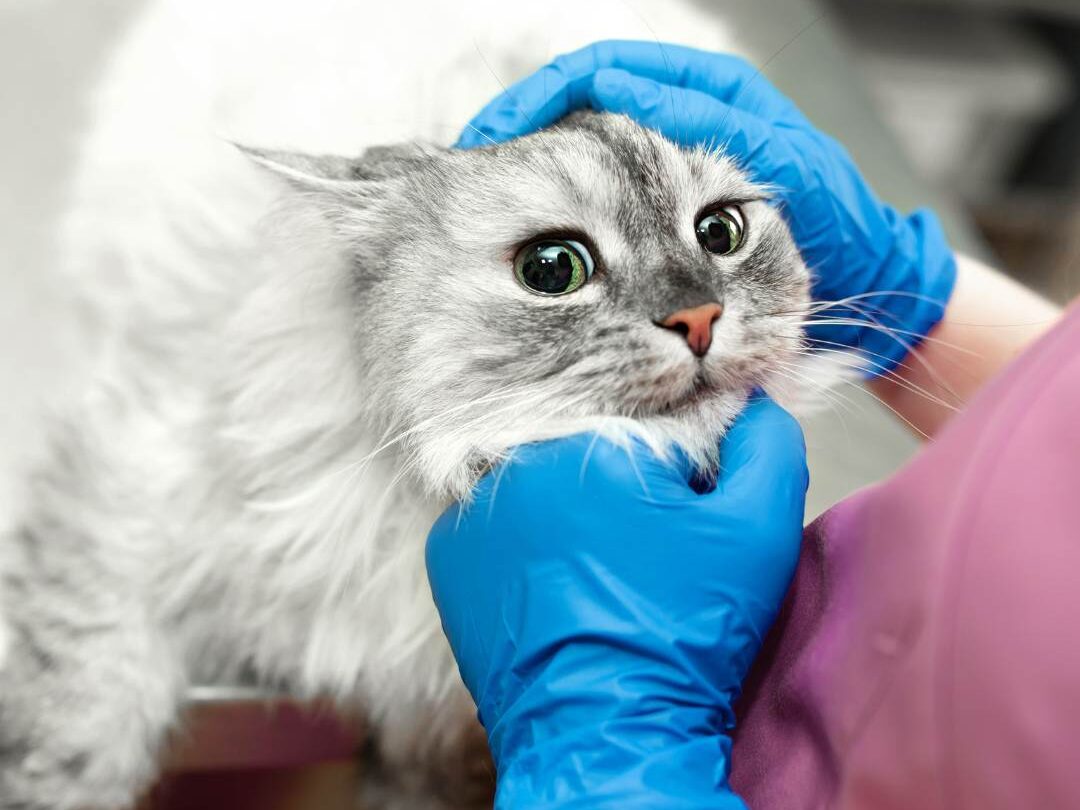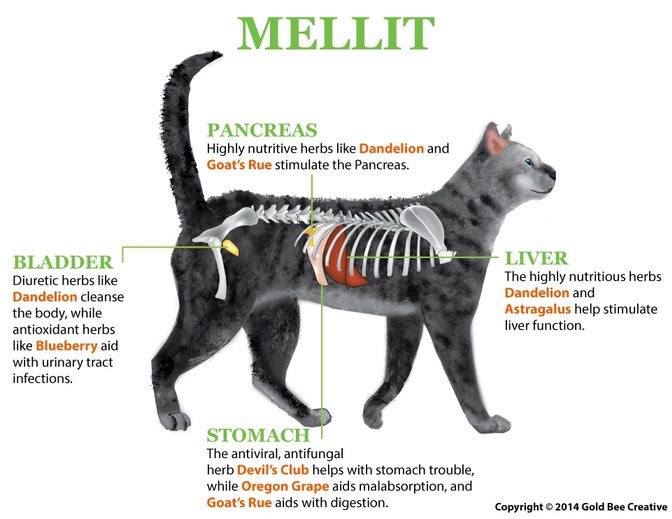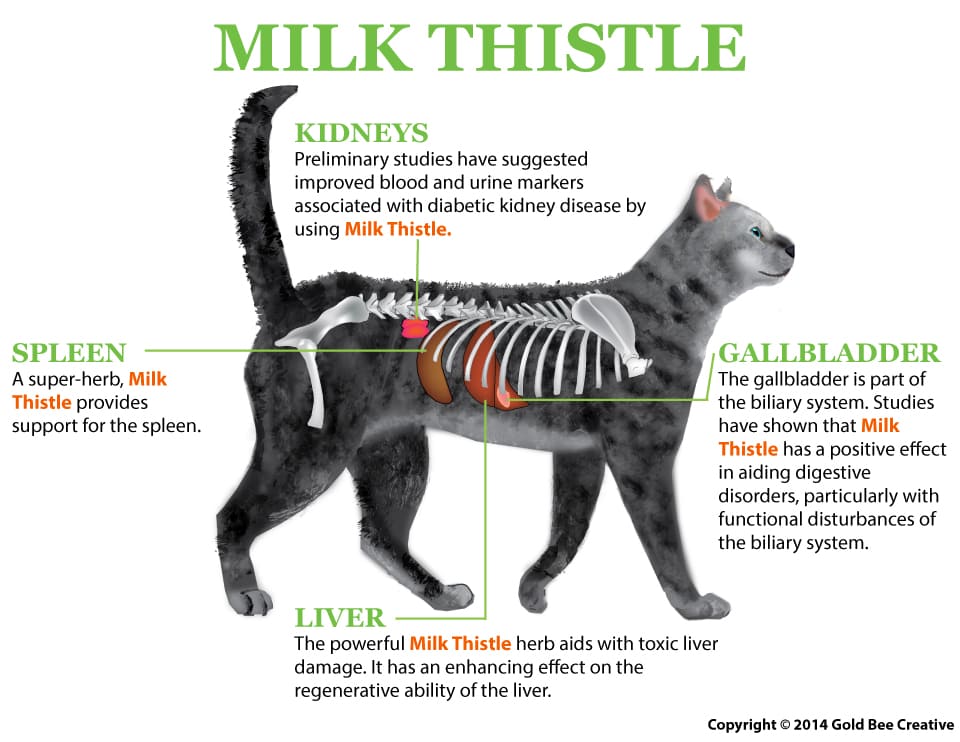diabetes support

free shipping over $100 (USA & Canada)
1-877-937-4372 the pet expert hotline


It can be an overwhelming experience to discover that your very own furkiddo has been diagnosed with diabetes, but you are not alone in this journey! NHV is here to provide you with some advice that may help you manage living with a diabetic pet. Our diabetic pet care tips may require some vigilance as routine is important when dealing with this condition, but they should help you feel more at ease and prepared to manage the different facets of this disease.
Consistency and structure are important when managing the health of a diabetic pet. As this condition revolves around glucose levels, it is important to develop stability around the factors which can influence blood sugar. We advise creating a schedule for feeding, medication, and exercise.
Consistency and structure are important when managing the health of a diabetic pet.
Veterinarians typically suggest feeding diabetic pets two meals a day, with twelve hours in between. Insulin should be administered after the pet has eaten, ideally an hour after a meal. The insulin dose is specifically based on the activity levels of a pet, so it would need to be appropriately adjusted if their energy requirements are changing every day. Consistent, moderate exercise on a daily basis can help your pet meet this goal.
Measuring a diabetic pet’s blood sugar is essential for managing their condition and ensuring that they receive the correct insulin dose. Glucose monitor device and test strips can collect and measure blood samples. Warming the area beforehand by rubbing it or using a warm cloth can improve blood flow, allowing for easier sample collection. While this process may be challenging at first, offering positive reinforcement during and after the blood draw can help your pet become more comfortable with this routine.
Although not yet FDA-approved, continuous glucose monitors are emerging as a safe and convenient option for pets, as they reduce the need for frequent blood draws.
Measuring a diabetic pet’s blood sugar is essential
Otherwise, lancing devices can be used to collect blood samples, with the best spots being the ear vein or accessory carpal pad (the pad found on the back of the front limb, where the wrist would be). Warming the area beforehand by rubbing it or using a warm cloth can improve blood flow, allowing for easier sample collection. While this process may be challenging at first, offering positive reinforcement during and after the blood draw can help your pet become more comfortable with this routine.
As maintaining optimal blood sugar levels is crucial in diabetic pets to avoid an emergency, it is important to become familiar with warning signs of hyperglycemia as well as hypoglycemia. Both of these fluctuations in blood sugar may lead to abnormal behavior, including changes in thirst, urination, appetite, and activity levels. If a diabetic pet is exhibiting such changes, a glucose monitor can come in handy to establish whether there is an imbalance.

A blood sugar imbalance in a diabetic pet can become a medical emergency, so if a pet is exhibiting severe lethargy, vomiting, or losing consciousness, it is crucial to seek veterinary care.
In contrast, hypoglycemia, which involves low blood sugar levels, can lead to symptoms of lack of Hyperglycemia is when a pet’s blood sugar levels are too high, and hypoglycemia is when blood sugar levels are too low. The symptoms of hyperglycemia include increased thirst and urination, excessive hunger, and depression. Hyperglycemia can lead to a condition called diabetic ketoacidosis, where glucose levels are so high that they cause a shift in the acid/base balance of the body. This can lead to irregular heart rhythms and muscle function, and can become fatal if left untreated.

In contrast, hypoglycemia, which involves low blood sugar levels, can lead to symptoms of lack of appetite, lethargy, weakness, and vomiting. This may occur if the insulin dose is too high, and more severe signs of this condition can include seizures and coma.
Parents living with a diabetic pet may feel more comfortable knowing that they are prepared for an emergency. One important care tip that we have for diabetic pets is to develop an emergency plan with your veterinarian, so that you may learn what to expect if a diabetic emergency arises. Some items to have ready to go at any time include:
In the case of severe hypoglycemia, pet parents can rub a small amount of glucose solution or corn syrup onto their little one’s gums or under their tongue.
Our Diabetes Super Support Gold kit comes with multiple supplements that may be beneficial additions to a care regimen for a diabetic pet. The star of the kit is Mellit which contains herbs that may help to regulate blood sugar levels, as well as balance the metabolism, and support the function of the pancreas which produces natural insulin.
To complement this supplement, we also suggest Milk Thistle for improving kidney and liver function, two organs which can become impaired due to high blood sugar in diabetic pets. Finally, Yucca is a great product for reducing discomfort as it may lower inflammation, thereby supporting a balanced appetite and digestive system.
A diabetes diagnosis may seem overwhelming at first, but the best way to feel more confident about handling your pet’s condition is to create a schedule, familiarize yourself with the warning signs of blood sugar imbalance, and organize preparations in the case of an emergency.
NHV wants to support you supporting your little one. Our products tailored for diabetes can help your furkiddo to maintain healthy blood sugar levels and support the systems of the body impaired or damaged by high blood sugar. We hope you find this information helpful, and our Pet Expert team is always available if you need additional guidance with adjusting to living with a diabetic pet.
diabetes support

Mellit, Milk Thistle & Yucca
bundle and save with pet expert kits
3 month supply for a small to medium size pet.
What is it?
NHV’s Diabetes Super Support Gold Kit contains diabetic cat and diabetic dog supplements to help your little one in their battle.
How Does it Work?
Why Should I Trust It?
Human-grade and safe for long-term use.


What is it?
NHV’s Diabetes Super Support Gold Kit contains diabetic cat and diabetic dog supplements to help your little one in their battle.
How Does it Work?
Why Should I Trust It?
Human-grade and safe for long-term use.

Knowing your precious little one has diabetes is worrying. But with early treatment, a customized diet plan, and the right supplements, the condition is manageable. And did you know that, in addition to traditional treatment, you can support diabetes in dogs and cats naturally? Our Diabetes Super Support Gold Kit can help ease symptoms of diabetes in dogs and cats, manage blood sugar levels, and protect other organs affected by the disease. This bundle contains our primary support for diabetes in cats and dogs – Mellit, as well as two additional supplements to help support the body: Milk Thistle & Yucca.
Keep reading to find out how they may help!
None of our supplements have any added preservatives, additives, flavorings, or artificial colors. They are all made with organically grown and ethically harvested (or ethically sourced) herbs, and are vet formulated, so you know your furbaby is getting the very best.
What is Diabetes in Cats and Dogs?
Like us, our furriends need glucose, a type of sugar, to fuel their bodies. Diabetes happens when the body cannot correctly turn glucose in the blood into energy that can be used. Glucose is also stuck in furkiddos’ bloodstream and accumulates. This unusual blood chemistry eventually leads to poison in the system, causing further damage and health problems.
Symptoms of Diabetes in Dogs and Cats
You may be wondering if there is any way you can tell if your furkid has diabetes.
Here are some general symptoms you may want to look out for:
Left untreated, the condition will escalate. So if you notice any of the above signs in your little one, you should take them to see a vet as soon as possible.
How NHV Remedies Support Diabetes in Dogs and Cats
Our Diabetes Super Support Gold Kit can support your little one in conjunction with traditional medicine.
Mellit is our fundamental support for diabetes in cats and dogs. As diabetes spikes up the blood sugar and blood pressure of your little one, herbs like Jambolan and Astragalus may help regulate them. The hypoglycemic (low blood sugar) activity in Devil’s club may also help balance the blood sugar. This herb also helps with balancing the metabolism of your little one.
Dandelion, on the other hand, is an anti-inflammatory tonic that may help protect the kidneys from the damage of diabetes. Diabetes can cause cataracts and urinary infections; blueberry helps prevent that. On top of that, the formulation may help with overall vitality.
Besides cataracts and urinary infections, diabetes can also lead to liver issues and kidney failure. Milk Thistle may improve liver and kidney function and support liver regeneration.
In addition, the formulation is well known for its use in treating liver disease because studies have shown its possible benefits in decreasing or reversing damage to the liver. This herb's main compound, Silymarin, may even help remove the toxins in the liver and other organs.
The last supplement included in this bundle is Yucca, which helps with discomfort management. The herbal extract is highly nutritious as it contains vitamin C, beta-carotene, B vitamins, magnesium, iron, calcium, manganese, protein, niacin, and phosphorus. It may also help reduce the inflammation caused by diabetes.
Natural Support for Diabetes in Dogs and Cats
Many pawrents may be worried about getting your little ones to take the supplements. But this would not be a problem with our products as they are liquid-based and palatable. So even finicky furkids may like the taste of our supplements. Even if they are incredibly picky eaters, you can easily hide the extract in their meals or simply drop the appropriate dosage in their cheek pockets.
NHV’s supplements are also all manufactured in a GMP-certified and FDA-approved facility – completely safe for pets.
It is never easy to cope with diabetes in dogs and cats. NHV is with you and your furkiddo every step of the way. Don’t hesitate to contact one of our Pet Experts whenever you need!
Try our Diabetes Super Support Gold Kit now to support your precious little one!
All NHV supplements are made with the finest quality organic or ethically harvested herbs. We use non-GMO vegetable glycerin as our base. NHV products are full-spectrum extracts.
Select your pet's weight to determine the correct dose.
To be taken twice daily. Determine your pet’s weight and then use the easy chart below to determine the correct dose. This is the minimum dosage.
Pet's Weight Dosage
0 - 15 lb = 0.5 ml
16 - 30 lb = 1.0 ml
31 - 45 lb = 1.5 ml
46 - 60 lb = 2.0 ml
61 - 75 lb = 2.5 ml
Over 75 lb = 3.0 ml
How to Administer
Shake well before use. The easiest method is to use the dropper provided and place the drops into your pet’s food or favorite treat. You can also use the dropper and squirt directly into the pet’s mouth. Some pets can be finicky, if this occurs consider hiding the drops in foods most pet’s love such as fish, chicken or yogurt or a favorite treat. If your pet only eats dry food then soak a few kibbles at feeding time.
For Best Results
Herbal dietary supplements are beneficial to the health and well-being of your pet and are safe for long-term use. Every pet responds to natural herbal supplements differently, therefore it is important to be consistent and administer the product daily. Supplements generally take two to four weeks to take effect, however this will vary from one animal to the next.
Product Storage
All NHV Natural Pet Products are pure herbal extracts and contain no artificial additives, preservatives or coloring. Shelf life after opening is 6 months and must be refrigerated after opening.
All information provided by NHV Natural Pet Products is for educational purposes only.
Knowing your precious little one has diabetes is worrying. But with early treatment, a customized diet plan, and the right supplements, the condition is manageable. And did you know that, in addition to traditional treatment, you can support diabetes in dogs and cats naturally? Our Diabetes Super Support Gold Kit can help ease symptoms of diabetes in dogs and cats, manage blood sugar levels, and protect other organs affected by the disease. This bundle contains our primary support for diabetes in cats and dogs – Mellit, as well as two additional supplements to help support the body: Milk Thistle & Yucca.
Keep reading to find out how they may help!
None of our supplements have any added preservatives, additives, flavorings, or artificial colors. They are all made with organically grown and ethically harvested (or ethically sourced) herbs, and are vet formulated, so you know your furbaby is getting the very best.
What is Diabetes in Cats and Dogs?
Like us, our furriends need glucose, a type of sugar, to fuel their bodies. Diabetes happens when the body cannot correctly turn glucose in the blood into energy that can be used. Glucose is also stuck in furkiddos’ bloodstream and accumulates. This unusual blood chemistry eventually leads to poison in the system, causing further damage and health problems.
Symptoms of Diabetes in Dogs and Cats
You may be wondering if there is any way you can tell if your furkid has diabetes.
Here are some general symptoms you may want to look out for:
Left untreated, the condition will escalate. So if you notice any of the above signs in your little one, you should take them to see a vet as soon as possible.
How NHV Remedies Support Diabetes in Dogs and Cats
Our Diabetes Super Support Gold Kit can support your little one in conjunction with traditional medicine.
Mellit is our fundamental support for diabetes in cats and dogs. As diabetes spikes up the blood sugar and blood pressure of your little one, herbs like Jambolan and Astragalus may help regulate them. The hypoglycemic (low blood sugar) activity in Devil’s club may also help balance the blood sugar. This herb also helps with balancing the metabolism of your little one.
Dandelion, on the other hand, is an anti-inflammatory tonic that may help protect the kidneys from the damage of diabetes. Diabetes can cause cataracts and urinary infections; blueberry helps prevent that. On top of that, the formulation may help with overall vitality.
Besides cataracts and urinary infections, diabetes can also lead to liver issues and kidney failure. Milk Thistle may improve liver and kidney function and support liver regeneration.
In addition, the formulation is well known for its use in treating liver disease because studies have shown its possible benefits in decreasing or reversing damage to the liver. This herb's main compound, Silymarin, may even help remove the toxins in the liver and other organs.
The last supplement included in this bundle is Yucca, which helps with discomfort management. The herbal extract is highly nutritious as it contains vitamin C, beta-carotene, B vitamins, magnesium, iron, calcium, manganese, protein, niacin, and phosphorus. It may also help reduce the inflammation caused by diabetes.
Natural Support for Diabetes in Dogs and Cats
Many pawrents may be worried about getting your little ones to take the supplements. But this would not be a problem with our products as they are liquid-based and palatable. So even finicky furkids may like the taste of our supplements. Even if they are incredibly picky eaters, you can easily hide the extract in their meals or simply drop the appropriate dosage in their cheek pockets.
NHV’s supplements are also all manufactured in a GMP-certified and FDA-approved facility – completely safe for pets.
It is never easy to cope with diabetes in dogs and cats. NHV is with you and your furkiddo every step of the way. Don’t hesitate to contact one of our Pet Experts whenever you need!
Try our Diabetes Super Support Gold Kit now to support your precious little one!
All NHV supplements are made with the finest quality organic or ethically harvested herbs. We use non-GMO vegetable glycerin as our base. NHV products are full-spectrum extracts.
Select your pet's weight to determine the correct dose.
To be taken twice daily. Determine your pet’s weight and then use the easy chart below to determine the correct dose. This is the minimum dosage.
Pet's Weight Dosage
0 - 15 lb = 0.5 ml
16 - 30 lb = 1.0 ml
31 - 45 lb = 1.5 ml
46 - 60 lb = 2.0 ml
61 - 75 lb = 2.5 ml
Over 75 lb = 3.0 ml
How to Administer
Shake well before use. The easiest method is to use the dropper provided and place the drops into your pet’s food or favorite treat. You can also use the dropper and squirt directly into the pet’s mouth. Some pets can be finicky, if this occurs consider hiding the drops in foods most pet’s love such as fish, chicken or yogurt or a favorite treat. If your pet only eats dry food then soak a few kibbles at feeding time.
For Best Results
Herbal dietary supplements are beneficial to the health and well-being of your pet and are safe for long-term use. Every pet responds to natural herbal supplements differently, therefore it is important to be consistent and administer the product daily. Supplements generally take two to four weeks to take effect, however this will vary from one animal to the next.
Product Storage
All NHV Natural Pet Products are pure herbal extracts and contain no artificial additives, preservatives or coloring. Shelf life after opening is 6 months and must be refrigerated after opening.
All information provided by NHV Natural Pet Products is for educational purposes only.
diabetes support

Supports healing of pancreatitis and diabetes mellitus in cats
buy 2 and save $3
3 month supply for a small to medium size pet
What is it?
A holistic supplement formulated with 9 powerful herbs to support the healing of pancreatitis and diabetes mellitus in cats.
How Does it Work?
Why Should I Trust It?
Vet-approved and vet-formulated natural remedy.


What is it?
A holistic supplement formulated with 9 powerful herbs to support the healing of pancreatitis and diabetes mellitus in cats.
How Does it Work?
Why Should I Trust It?
Vet-approved and vet-formulated natural remedy.

Diabetes in cats is a common pancreatic disorder that occurs when sugar builds up in the bloodstream instead of entering the tissue to provide energy. If left untreated, your cat can be prone to infections, a slower healing process, and even blindness. Diabetes can also lead to heart, liver or kidney disease.
Some cat breeds are more prone to diabetes, such as the Russian Blue. You can find out if your cat breed is more prone to contract diabetes at NHV breeds and conditions online.
If you have questions about any of our holistic supplements, you can ask an expert at NHV because we want to help your kitty live a longer healthier life naturally.
Read a real pet story of how NHV’s proprietary blend of holistic support helped a cat with diabetes mellitus.

NHV’s Mellit for Cats is an herbal formula explicitly made to support pancreatitis and diabetes mellitus in cats. This potent blend contains nine powerful ingredients designed to help control blood sugar levels and provide cat circulatory support, as well as strengthen and protect other organs that may be affected due to the imbalances triggered in the body.
Select your pet's weight to determine the correct dose.
To be taken twice daily. Determine your pet’s weight and then use the easy chart below to determine the correct dose. This is the minimum dosage.
Pet's Weight Dosage
0 - 15 lb = 0.5 ml
16 - 30 lb = 1.0 ml
31 - 45 lb = 1.5 ml
46 - 60 lb = 2.0 ml
61 - 75 lb = 2.5 ml
Over 75 lb = 3.0 ml
How to Administer
Shake well before use. The easiest method is to use the dropper provide and places the drops into your pet’s food or favorite treat. You can also use the dropper and squirt directly into the pet’s mouth.
Some pets can be finicky, if this occurs consider hiding the drops in foods most pet’s love such as fish, chicken or yogurt or a favourite treat. If your pet only eats dry food then soak a few kibbles at feeding time.
For Best Results
Herbal dietary supplements are beneficial to the health and wellbeing of your pet and are safe for long-term use. Every pet responds to natural herbal supplements differently, therefore it is important to be consistent and administer the product daily. Supplements generally take two to four weeks to take effect, however this will vary from one animal to the next.
Product Storage
All NHV Natural Pet Products are pure herbal extracts and contain no artificial additives, preservatives or coloring. Shelf life after opening is 6 months and must be refrigerated after opening.
Cautions and Contraindications
Do not use Mellit in pregnant or nursing animals. Speak to your vet before using our products. A second visit is recommended if your pet’s condition does not improve, or deteriorates after continued use of the supplements.
All information provided by NHV Natural Pet Products is for educational purposes only.
Diabetes in cats is a common pancreatic disorder that occurs when sugar builds up in the bloodstream instead of entering the tissue to provide energy. If left untreated, your cat can be prone to infections, a slower healing process, and even blindness. Diabetes can also lead to heart, liver or kidney disease.
Some cat breeds are more prone to diabetes, such as the Russian Blue. You can find out if your cat breed is more prone to contract diabetes at NHV breeds and conditions online.
If you have questions about any of our holistic supplements, you can ask an expert at NHV because we want to help your kitty live a longer healthier life naturally.
Read a real pet story of how NHV’s proprietary blend of holistic support helped a cat with diabetes mellitus.

NHV’s Mellit for Cats is an herbal formula explicitly made to support pancreatitis and diabetes mellitus in cats. This potent blend contains nine powerful ingredients designed to help control blood sugar levels and provide cat circulatory support, as well as strengthen and protect other organs that may be affected due to the imbalances triggered in the body.
Select your pet's weight to determine the correct dose.
To be taken twice daily. Determine your pet’s weight and then use the easy chart below to determine the correct dose. This is the minimum dosage.
Pet's Weight Dosage
0 - 15 lb = 0.5 ml
16 - 30 lb = 1.0 ml
31 - 45 lb = 1.5 ml
46 - 60 lb = 2.0 ml
61 - 75 lb = 2.5 ml
Over 75 lb = 3.0 ml
How to Administer
Shake well before use. The easiest method is to use the dropper provide and places the drops into your pet’s food or favorite treat. You can also use the dropper and squirt directly into the pet’s mouth.
Some pets can be finicky, if this occurs consider hiding the drops in foods most pet’s love such as fish, chicken or yogurt or a favourite treat. If your pet only eats dry food then soak a few kibbles at feeding time.
For Best Results
Herbal dietary supplements are beneficial to the health and wellbeing of your pet and are safe for long-term use. Every pet responds to natural herbal supplements differently, therefore it is important to be consistent and administer the product daily. Supplements generally take two to four weeks to take effect, however this will vary from one animal to the next.
Product Storage
All NHV Natural Pet Products are pure herbal extracts and contain no artificial additives, preservatives or coloring. Shelf life after opening is 6 months and must be refrigerated after opening.
Cautions and Contraindications
Do not use Mellit in pregnant or nursing animals. Speak to your vet before using our products. A second visit is recommended if your pet’s condition does not improve, or deteriorates after continued use of the supplements.
All information provided by NHV Natural Pet Products is for educational purposes only.
liver support

100% Natural Liver and Kidney Detox and Cancer Support in Cats
buy 2 and save $3
3 month supply for a small to medium size pet
What Is It?
Milk Thistle is a well-known herb among conventional and holistic veterinarians, often recommended for cats who have liver disorders, are fighting cancer, diabetes, kidney issues, gallbladder and bile duct issues, as well as hyperthyroidism.
How Does it Work?
Why Should I Trust It?
100% natural supplement approved and formulated by vets.


What Is It?
Milk Thistle is a well-known herb among conventional and holistic veterinarians, often recommended for cats who have liver disorders, are fighting cancer, diabetes, kidney issues, gallbladder and bile duct issues, as well as hyperthyroidism.
How Does it Work?
Why Should I Trust It?
100% natural supplement approved and formulated by vets.

Milk thistle, also known as Silybum Marianum is an herb that has been used for thousands of years by humans for its powerful medicinal properties. The active ingredient is Silymarin which contains flavonoids that have many beneficial properties including:
Milk thistle is one of the few herbs that have no equivalent in conventional medicine and has many uses. You can read about the many applications of Milk Thistle for cats and dogs on Dr. Hillary Cook's blog.
Milk Thistle for Liver Function
Milk Thistle for cats with liver disease is glycerin-based and safe for long-term use. This potent herbal formula provides excellent proactive support and can be taken in conjunction with conventional treatment.
Milk Thistle for Kidney Function
Milk Thistle for Anti-Cancer Support
Milk Thistle may also be beneficial to cats undergoing chemotherapy as Silymarium may enhance the activity of certain chemo drugs.
You can read Peachez's Story with Milk Thistle for cats and how it helped her with cancer and liver problems.
NHV’s certified organic Milk Thistle is a safe herb that is recommended and used by holistic practitioners. All of our products are all-natural and formulated by veterinarians with a focus on comprehensively supporting the health and well-being of your feline family member.
If you have questions about Milk Thistle or any of our plant-based products, ask an NHV expert because at NHV we want your kitty’s health to be purrfect!

NHV’s Milk Thistle for Cats contains just one ingredient.
Select your pet's weight to determine the correct dose.
To be taken twice daily. Determine your pet’s weight and then use the easy chart below to determine the correct dose. This is the minimum dosage.
Pet's Weight Dosage
0 - 15 lb = 0.5 ml
16 - 30 lb = 1.0 ml
31 - 45 lb = 1.5 ml
46 - 60 lb = 2.0 ml
61 - 75 lb = 2.5 ml
Over 75 lb = 3.0 ml
How to Administer
Shake well before use. The easiest method is to use the dropper provide and places the drops into your pet’s food or favorite treat. You can also use the dropper and squirt directly into the pet’s mouth.
Some pets can be finicky, if this occurs consider hiding the drops in foods most pet’s love such as fish, chicken or yogurt or a favorite treat. If your pet only eats dry food then soak a few kibbles at feeding time.
For Best Results
Herbal dietary supplements are beneficial to the health and wellbeing of your pet and are safe for long-term use. Every pet responds to natural herbal supplements differently, therefore it is important to be consistent and administer the product daily. Supplements generally take two to four weeks to take effect, however this will vary from one animal to the next.
Product Storage
All NHV Natural Pet Products are pure herbal extracts and contain no artificial additives, preservatives or coloring. Shelf life after opening is 6 months and must be refrigerated after opening.
Cautions and Contraindications
Do not use Milk Thistle in pregnant or nursing animals. Speak to your vet before using our products. A second visit is recommended if your pet’s condition does not improve, or deteriorates after continued use of the supplements.
All information provided by NHV Natural Pet Products is for educational purposes only.
Milk thistle, also known as Silybum Marianum is an herb that has been used for thousands of years by humans for its powerful medicinal properties. The active ingredient is Silymarin which contains flavonoids that have many beneficial properties including:
Milk thistle is one of the few herbs that have no equivalent in conventional medicine and has many uses. You can read about the many applications of Milk Thistle for cats and dogs on Dr. Hillary Cook's blog.
Milk Thistle for Liver Function
Milk Thistle for cats with liver disease is glycerin-based and safe for long-term use. This potent herbal formula provides excellent proactive support and can be taken in conjunction with conventional treatment.
Milk Thistle for Kidney Function
Milk Thistle for Anti-Cancer Support
Milk Thistle may also be beneficial to cats undergoing chemotherapy as Silymarium may enhance the activity of certain chemo drugs.
You can read Peachez's Story with Milk Thistle for cats and how it helped her with cancer and liver problems.
NHV’s certified organic Milk Thistle is a safe herb that is recommended and used by holistic practitioners. All of our products are all-natural and formulated by veterinarians with a focus on comprehensively supporting the health and well-being of your feline family member.
If you have questions about Milk Thistle or any of our plant-based products, ask an NHV expert because at NHV we want your kitty’s health to be purrfect!

NHV’s Milk Thistle for Cats contains just one ingredient.
Select your pet's weight to determine the correct dose.
To be taken twice daily. Determine your pet’s weight and then use the easy chart below to determine the correct dose. This is the minimum dosage.
Pet's Weight Dosage
0 - 15 lb = 0.5 ml
16 - 30 lb = 1.0 ml
31 - 45 lb = 1.5 ml
46 - 60 lb = 2.0 ml
61 - 75 lb = 2.5 ml
Over 75 lb = 3.0 ml
How to Administer
Shake well before use. The easiest method is to use the dropper provide and places the drops into your pet’s food or favorite treat. You can also use the dropper and squirt directly into the pet’s mouth.
Some pets can be finicky, if this occurs consider hiding the drops in foods most pet’s love such as fish, chicken or yogurt or a favorite treat. If your pet only eats dry food then soak a few kibbles at feeding time.
For Best Results
Herbal dietary supplements are beneficial to the health and wellbeing of your pet and are safe for long-term use. Every pet responds to natural herbal supplements differently, therefore it is important to be consistent and administer the product daily. Supplements generally take two to four weeks to take effect, however this will vary from one animal to the next.
Product Storage
All NHV Natural Pet Products are pure herbal extracts and contain no artificial additives, preservatives or coloring. Shelf life after opening is 6 months and must be refrigerated after opening.
Cautions and Contraindications
Do not use Milk Thistle in pregnant or nursing animals. Speak to your vet before using our products. A second visit is recommended if your pet’s condition does not improve, or deteriorates after continued use of the supplements.
All information provided by NHV Natural Pet Products is for educational purposes only.
Published: August 20, 2024